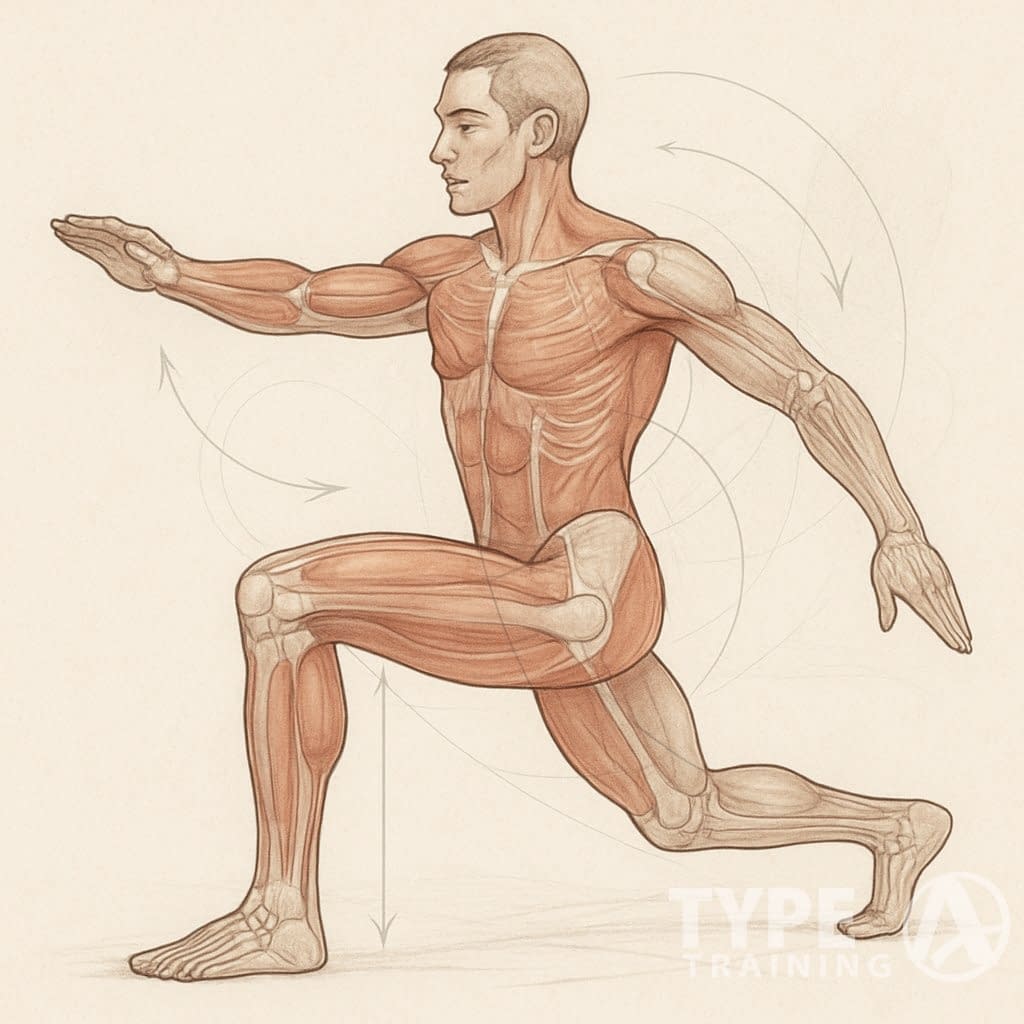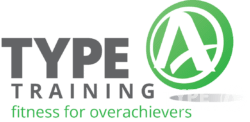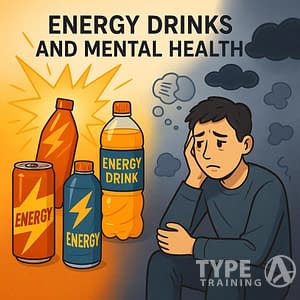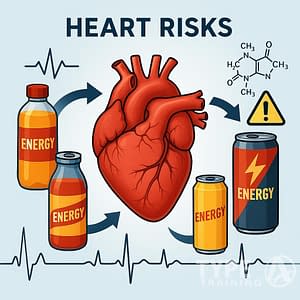Your body moves in wild, intricate ways every single day. Maybe you’re climbing subway stairs in Midtown, or glued to your desk in the Financial District for hours.
The Science Behind Corrective Exercise is essential for understanding your body.
Corrective exercise taps into anatomy and biomechanics to spot and fix movement quirks that cause pain or hold you back. Got rounded shoulders from too much screen time? Or hips that feel stuck after a long commute? Knowing how your muscles and joints team up can help you move smoother and feel a whole lot stronger.
By exploring the Science Behind Corrective Exercise, you can enhance your health and wellbeing.
Popular posts:

The science behind corrective exercise blends muscle function, joint movement, and nervous system control. It’s all about crafting solutions that actually fit your movement issues.
The Science Behind Corrective Exercise offers valuable insights into your physical challenges.
Manhattan professionals end up with similar aches and pains thanks to the city grind. Corrective exercise can really help with those classic New York problems.
Delving into the Science Behind Corrective Exercise can provide relief from discomfort.
By figuring out which muscles are slacking off or working too hard, you get a custom plan to bring your movement back in balance.
Incorporating the Science Behind Corrective Exercise in your routine can yield significant benefits.
This isn’t your average gym routine. The focus is on what’s actually causing your movement funk, not just covering up the symptoms.
Understanding the Science Behind Corrective Exercise helps in recognizing your body’s patterns.
You’ll get a better sense of how muscle imbalances sneak up on you, why certain habits mess with your form, and how to use strategies that fit your NYC hustle.
Key Takeaways
The Science Behind Corrective Exercise explains the importance of muscle function.
- Corrective exercise blends anatomy and biomechanics to pinpoint and fix movement problems.
- Understanding muscle imbalances and patterns helps you tackle issues like poor posture and stiff joints.
- Using corrective exercise smartly can get you moving better and help ward off injuries.
Core Principles of Corrective Exercise
By applying the Science Behind Corrective Exercise, you can achieve better movement.

Corrective exercise runs on systematic principles that target muscle imbalance with personalized assessment and programming. These basics help you move better and dodge injuries.
Definition and Function
Corrective exercise is a focused approach that aims to fix your body’s movement quirks through smart intervention. It pulls from anatomy, physiology, and biomechanics to get to the bottom of bad movement habits.
The Science Behind Corrective Exercise simplifies complex movement patterns.
Primary Functions:
- Restore muscle balance between muscles that work against each other.
- Improve joint mobility and stability.
- Boost movement quality in everyday stuff.
- Lower injury risk by moving better.
Instead of tossing out generic exercises, this process zeros in on your actual imbalances. If you’re stuck at a desk all day, you probably need to loosen up those hip flexors and wake up your glutes.
Relying on the Science Behind Corrective Exercise can improve your daily functions.
A solid corrective exercise plan hits three main points: flexibility, strength, and motor control. Each one tackles a different piece of the movement puzzle, especially for busy New Yorkers.
The Role of Movement Patterns
Movement patterns shape how you do everything from tying your
Essential Movement Patterns:
- Squatting – Hip and knee teamwork.
- Lunging – Single-leg control.
- Pushing – Upper body strength and posture.
- Pulling – Backside muscle activation.
- Rotating – Core and spine mobility.
City life does a number on these patterns. Concrete sidewalks, endless stairs, and lugging heavy bags all force your body to adapt in weird ways.
Your movement patterns decide how forces move through your body. If one gets off track, your body starts to compensate, and that mess can snowball.
Assessment and Individualization
Good corrective exercise starts with a real assessment of your posture, mobility, and how you move. This step finds the trouble spots that need attention.
Assessment Components:
- Static posture analysis – Spots alignment issues.
- Movement screening – Finds what’s not working right.
- Flexibility testing – Checks for tight spots.
- Strength evaluation – Looks for weak links.
Your results shape a plan that actually fits your life. An executive in the Financial District won’t need the same moves as a yoga instructor in Chelsea or a senior on the Upper East Side.
Individualization matters. Long commutes, high-stress jobs, and not much time for workouts all change how your trainer in Manhattan builds your program.
You’ll need to reassess and tweak your plan as you go. What works now might need a refresh as you get stronger and your movement changes.
Anatomy and Muscle Imbalances
The Science Behind Corrective Exercise clarifies how to restore muscle balance.
Muscle imbalances pop up when some muscles overwork and others slack off. This messes with your joints, movement, and even simple daily stuff.
Following the Science Behind Corrective Exercise will enhance your performance.
Key Muscles and Joint Structures
Your muscles and joints have to work together to keep you moving right. The core stabilizers—think diaphragm, pelvic floor, transverse abdominis, and multifidus—are the starting point for pretty much every movement.
The Science Behind Corrective Exercise highlights the role of core stabilizers.
Primary Movement Systems:
-
- Hip Complex: Glutes, hip flexors, adductors, deep rotators.
- Shoulder Girdle: Rotator cuff, traps, serratus anterior, rhomboids.
- Spine: Erector spinae, deep neck flexors, thoracic extensors.
The Science Behind Corrective Exercise emphasizes the importance of joint health.
- Ankle Complex: Tibialis anterior, calves, soleus, peroneals.
If you’re stuck sitting all day, you’re probably dealing with tight hip flexors and lazy glutes. That’s classic lower crossed syndrome—overactive hip flexors and back muscles, weak glutes and deep abs.
Learning the Science Behind Corrective Exercise aids in injury prevention.
Your shoulders get hit too, especially with all the desk time in NYC. Tight pecs and upper traps, plus weak neck flexors and mid-back muscles, lead to upper crossed syndrome—hello, tech neck and rounded shoulders.
Joints like your lumbar spine, thoracic spine, and sacroiliac joint need balanced muscles to stay happy. If nearby muscles get out of sync, those joints start to pay the price.
Causes and Effects of Muscle Imbalances
Bad posture and repetitive moves—especially sitting—cause some muscles to tighten up and others to weaken. Your Manhattan routine probably isn’t helping.
Embracing the Science Behind Corrective Exercise can alter your life for the better.
Common Causes in NYC:
-
- Long desk hours in Midtown.
Every professional should know the Science Behind Corrective Exercise.
-
- Endless phone time on the subway.
- Heavy bags slung over one shoulder.
The Science Behind Corrective Exercise explains why posture matters.
-
- High heels at work.
- Stress tension (yep, city life).
Gaining insights from the Science Behind Corrective Exercise will enhance your workouts.
When muscles get out of balance, your length-tension relationships go sideways. Tight muscles can’t stretch well, and long, weak muscles can’t pull their weight.
Physiological Effects:
-
- Force couples get weird—muscles don’t work together right.
- Compensations develop—your body finds workarounds.
The Science Behind Corrective Exercise can lead to better long-term health.
-
- Joints get out of whack—alignment shifts.
- Chronic pain sneaks in from overusing the wrong stuff.
Utilizing the Science Behind Corrective Exercise fosters a proactive approach to fitness.
Your muscle sensors—spindles and Golgi tendon organs—get confused, sending your nervous system bad info about where your joints are and how you’re moving.
Upper East Siders know the drill: neck tension, back pain, and stiff shoulders from those packed schedules.
Integrating the Science Behind Corrective Exercise into daily routines is crucial.
Impact on Posture and Functional Movement
Muscle imbalances pull your body out of alignment. Your skeleton shifts, and your body adapts—usually not in a good way.
The Science Behind Corrective Exercise serves as a guideline for all fitness enthusiasts.
Postural Distortions:
-
- Forward head posture—neck sticks out.
Learning the Science Behind Corrective Exercise will empower your workouts.
-
- Rounded shoulders—shoulders roll in.
- Anterior pelvic tilt—low back arches too much.
Understanding the Science Behind Corrective Exercise is vital for injury recovery.
- Knee valgus—knees cave in.
These aren’t just cosmetic. They change how you move, for the worse. Even a walk through Chelsea or climbing stairs in a West Village brownstone can feel off when your movement patterns break down.
Functional Movement Impacts:
-
- Stiffness—can’t move like you used to.
Incorporating the Science Behind Corrective Exercise will improve your overall fitness.
- Weakness—lifting and carrying gets harder.
- Balance drops off—more likely to trip or fall.
- You tire out faster—moving takes more effort.
Your kinetic chain is like a domino setup—one piece falls, the rest follow. Tight hips can mean back pain, and stiff ankles can mess with your knees.
Your body develops compensation patterns to keep you moving, but those workarounds pile on stress elsewhere and can lead to nagging pain.
Financial District folks see it all the time: neck tension from the computer leads to headaches, then shoulder pain, and suddenly, you’re less productive at work.
Every fitness journey benefits from the Science Behind Corrective Exercise.
Biomechanics and Movement Mechanics
The kinetic chain links every joint and muscle in your body. If one area gets stuck, movement patterns everywhere else feel the impact.
The Kinetic Chain Concept
Grasping the Science Behind Corrective Exercise can enhance joint stability.
Your body’s a team—each joint and muscle affects the others. Walking down Broadway or hustling up subway stairs sends forces through your whole kinetic chain.
The kinetic chain has three big pieces:
- Open chain movements—your hand or foot moves freely.
- Closed chain movements—your hand or foot stays put while your body moves.
- Force transmission—energy moves from joint to joint.
Tight ankles from unsupportive
Research on biomechanics shows that your kinetic chain needs stable and mobile joints to work together. Your body alternates between joints that anchor you and ones that let you move.
Understanding Biomechanical Deficits
The Science Behind Corrective Exercise delivers crucial insights into joint movement.
Biomechanical deficits show up when your movement strays from good mechanics. City life—repetitive stress, bad posture, compensations—makes these issues pretty common.
Frequent biomechanical deficits:
-
- Forward head from too much screen time.
- Rounded shoulders from sitting.
Maximizing the Science Behind Corrective Exercise leads to better training outcomes.
- Tight hip flexors from desk work.
- Weak glutes from inactivity.
Your Manhattan routine creates predictable movement issues. Eight hours at a Midtown desk shortens your hip flexors and weakens your glutes. Slinging a heavy bag over one shoulder throws you off balance.
Biomechanics research finds that these deficits mess with how your body spreads out force. If your glutes don’t fire, your lower back picks up the slack, which can lead to pain.
Understanding the Science Behind Corrective Exercise enhances your training regimen.
Movement Dysfunction and Joint Mobility
Movement dysfunction shows up when your joints lose their normal range of motion or just move weirdly during daily stuff. When that happens, your body starts compensating, which can crank up your risk for injury and mess with your performance.
Joint mobility restrictions commonly affect:
-
- Thoracic spine extension from forward head posture
The Science Behind Corrective Exercise is a cornerstone of fitness education.
- Hip internal rotation from sitting too much
- Ankle dorsiflexion from rocking high heels
- Shoulder external rotation from those classic rounded shoulders
Living in NYC brings its own movement headaches. Walking on concrete all day slowly chips away at your ankle mobility. And if you’re climbing stairs in those old, elevator-less buildings, you’ll probably notice some hip or knee issues.
Appling the Science Behind Corrective Exercise will refine your skills as an athlete.
Corrective exercise specialists check out how you move with assessments. They watch you squat, reach overhead, or stand on one leg to spot funky patterns.
If your joints aren’t moving right, your nervous system finds workarounds. These new ways of moving start to feel normal, but they put too much stress on some spots and let others slack off.
Implementing Corrective Exercise Strategies
The Science Behind Corrective Exercise is essential for developing effective workouts.
Getting corrective exercise right means using a system that tackles mobility restrictions, muscle imbalances, and awkward movement. You’ll need flexibility work, some strength training, and a bit of neuromuscular re-education—especially if you’re a Manhattan pro dealing with posture stress and tight spaces.
Stretching, Flexibility, and Mobility
Your flexibility routine should zero in on the muscles that get tight from NYC life. Hip flexors, thoracic spine, and shoulders need extra love after all that sitting and screen time.
Static stretching works best after you work out or during a chill mobility session. Hold each stretch for 30-60 seconds. If you’re glued to a Midtown desk, focus on your hip flexors, hamstrings, and chest.
To excel in fitness, one must consider the Science Behind Corrective Exercise.
Dynamic stretching is perfect for warming up. Try leg swings, arm circles, and torso twists to get your joints moving and muscles prepped.
Self-myofascial release techniques break up tissue restrictions that mess with your mobility. Grab a foam roller or massage ball and work out the kinks in your IT bands, calves, and upper back.
PNF stretching mixes stretching with muscle contractions for faster flexibility gains. It’s especially good for tight hip flexors—super common if you’re pounding the pavement in Chelsea or SoHo.
Your mobility routine should hit joints directly. Ankle circles, shoulder rolls, and spinal twists can loosen up the stiffness from city living.
Strive for a deeper understanding of the Science Behind Corrective Exercise.
Strengthening and Muscle Activation
Muscle activation is all about waking up the muscles that have gone quiet from bad movement patterns. Deep core stabilizers, glutes, and mid-traps usually need a little extra attention before you get into heavy strengthening.
Isolated strengthening targets weak muscles one at a time. Glute bridges, clamshells, and bird dogs are great for activating sleepy muscle groups—plus, you can do them even in a tiny Upper East Side apartment.
Progressive resistance training builds your strength over time. Start with bodyweight moves, then add weight as you get stronger. Move from simple exercises to more complex patterns as you improve.
The Science Behind Corrective Exercise can push your limits and enhance performance.
Corrective exercise specialists use specific techniques to fix muscle imbalances. They’ll help you get your muscles firing in the right order again.
Functional strengthening gets multiple muscle groups working together. Think squats, deadlifts, and push-ups—these mimic daily stuff like subway stairs or hauling groceries in Tribeca.
A solid strength program should hit both your stabilizers and your big movers. Core exercises protect your spine, while compound moves build the strength you need for city life.
Proprioception and Coordination
Proprioception training helps your body sense where it is in space. This skill keeps you from getting hurt and makes your movements smoother during workouts and daily stuff.
Balance challenges force your nervous system to step up its game. Try single-leg stands, stability ball moves, or working on an unstable surface. You’ll thank yourself when you’re dodging crowds in the Financial District.
The Science Behind Corrective Exercise ensures your training is effective and safe.
Reactive training sharpens your reflexes. Agility drills, quick reactions, and sport-style moves help you stay coordinated and lower your risk of injury.
Movement assessment specialists use proprioceptive exercises to retrain how you move. These help your nervous system pick up healthier movement habits.
Neuromuscular re-education teaches your brain and muscles to sync up. Slow, controlled movements with a focus on form lay down better movement patterns—handy for West Village professionals.
Build up your coordination training from easy to tricky. Start with basic balance, then work up to multi-directional and reactive drills.
Injury Prevention and Rehabilitation Applications
Corrective exercise bridges rehab and fitness by fixing movement issues before they blow up into injuries. Your program should spot and correct funky patterns early.
Understanding the Science Behind Corrective Exercise can lead to fewer injuries.
Pre-rehabilitation means dealing with movement issues before they hurt. Regular screens help you spot trouble spots, especially with a hectic Manhattan routine.
Post-rehabilitation integration helps you move from physical therapy back to regular life. Corrective exercises keep the progress you made in rehab and help you avoid repeat injuries.
Research shows 90% of personal training clients report muscle and joint pain that interferes with their workouts. So, honestly, corrective exercise isn’t optional—it’s pretty essential.
Movement pattern correction fixes the root of the problem, not just the symptoms. Focus on restoring good movement with targeted work.
The Science Behind Corrective Exercise encourages a holistic view on fitness.
If you want to avoid injuries in Manhattan, you’ve got to address lifestyle stuff too. Long commutes, stress, and doing the same movements over and over all add up—but corrective exercise can help break those patterns.
Frequently Asked Questions
Exploring the Science Behind Corrective Exercise offers valuable life lessons.
Knowing how biomechanics and anatomy play together lets you make smarter choices about corrective exercise programs. Here are some common questions about movement patterns, muscle imbalances, and how targeted training can make Manhattan life a bit easier on your body.
How does the understanding of biomechanics enhance the effectiveness of corrective exercises?
Biomechanics helps you see how your body moves—and maybe why some moves hurt or just feel off. When you team up with a Corrective Exercise Specialist Manhattan, they’ll watch your movement patterns and spot issues before you even notice them.
Your body’s all connected, so a problem in one spot can mess up everything else. If you’re stuck at a Midtown desk? Tight hip flexors and weak glutes can start a chain reaction that ends with lower back pain.
The science behind corrective exercise shows that understanding these links lets you design more targeted exercise programs. Your specialist can pinpoint which muscles need stretching and which ones need some strength.
When you get how force travels through your body, you can actually fix the root problem—not just slap a Band-Aid on the symptoms. That’s way better than doing random stretches or generic strength moves that don’t address your unique issues.
What biomechanical principles are most important for developing a corrective exercise program?
The big one? Spotting muscle imbalances that mess with your movement. Your body loves to compensate for weak or tight muscles by making others work overtime. That’s how bad habits and pain start.
Movement assessment is the backbone of any solid corrective exercise plan. A good Movement Assessment NYC specialist will watch you move in all directions and positions, looking for tight spots and weird compensations.
You’ve also got to think about force production and absorption. Your muscles need to work together to move you efficiently and handle impact. If that system breaks down, you might get knee pain from bad landings or shoulder issues from lifting wrong.
Joint mobility and stability should work as a team. Some joints need to be mobile, others need to be rock-solid. Your program should balance both, based on what your body actually needs.
How are common musculoskeletal imbalances addressed through corrective exercise techniques?
Upper crossed syndrome is everywhere among Manhattan pros glued to their computers. Your head juts forward, shoulders round, and your upper back gets lazy. Corrective exercise techniques target these by stretching the tight stuff and strengthening what’s weak.
By applying the Science Behind Corrective Exercise, you can improve your life.
Lower crossed syndrome hits your hips and low back from too much sitting. Hip flexors tighten up, glutes go dormant. A Posture Correction Manhattan specialist can walk you through moves to loosen your hips and wake up those glutes.
Forward head posture? Another NYC classic. Your neck muscles work overtime to hold your head up when it creeps forward. Corrective exercises here mean strengthening deep neck flexors and stretching out the upper traps.
Ankle mobility takes a hit from dress
In what ways does the study of anatomy contribute to the creation of safer corrective exercise routines?
The Science Behind Corrective Exercise connects movement with health.
Knowing where muscles start and end helps you target them better and avoid injury. If you understand how they attach to bones, you can fine-tune your exercises and keep stress off sensitive spots.
Joint structure shapes how you should move. Your shoulder’s built differently than your hip, so you need different exercises and patterns for each. An Injury Prevention Specialist Manhattan uses this info to keep you safe.
Fascial connections mean muscles work together, not in isolation. Your body has lines of fascia linking muscles from your feet up to your head. Knowing these helps you design moves that boost your overall movement quality.
Nerve pathways and muscle activation matter, too. Some muscles should fire before others to protect your joints. Your corrective exercise plan should follow those patterns so you don’t end up injured.
Understanding the Science Behind Corrective Exercise can generate motivation.
What role does exercise physiology play in the assessment and application of corrective exercises?
Exercise physiology helps you pick the right intensity and progression for your program. Your body adapts in predictable ways, and knowing that helps you build more effective routines.
Muscle fiber types change how you respond to different exercises. Some muscles are built for endurance, others for power. Your Corrective Exercise NYC specialist will use this to pick the best moves for each muscle group.
Energy systems matter for how long you can keep good form. As you get tired, your movement quality drops and injury risk goes up. Your program should match your fitness level so you can keep your form sharp.
Recovery and adaptation are key. Your body needs time to adjust to new movement patterns. Go too hard, too fast, and you might just reinforce the bad habits you’re trying to fix.
How can the principles covered in The BioMechanics Method be integrated into a corrective exercise specialist’s practice?
Every fitness enthusiast should embrace the Science Behind Corrective Exercise.
The BioMechanics Method gives corrective exercise specialists a super practical, step-by-step way to tackle movement issues. It starts with spotting structural imbalances, which is pretty essential in Manhattan where people are always on the go.
If you’re in Chelsea or the Upper East Side, this assessment process means you get a thorough look at your posture, movement patterns, and muscle function. Specialists can really zero in on what matters for each individual.
The exercise library? It’s loaded with options for all fitness levels and different spaces. So, whether you’re squeezing in a workout in a tiny SoHo apartment or hitting the gym in the Financial District, your specialist can tweak things to fit.
This is the Science Behind Corrective Exercise, ensuring optimal health and fitness.
There are also business integration tools that let specialists track your progress and keep in touch with other healthcare folks. In a place like Manhattan, where everyone seems to have a whole team for their health, that kind of coordination just makes sense.










